calsfoundation@cals.org
McCrory (Woodruff County)
| Latitude and Longitude: | 35°15’22″N 091°12’00″W |
| Elevation: | 210 feet |
| Area: | 2.37 square miles (2020 Census) |
| Population: | 1,583 (2020 Census) |
| Incorporation Date: | March 24, 1890 |
Historical Population as per the U.S. Census:
|
1810 |
1820 |
1830 |
1840 |
1850 |
1860 |
1870 |
1880 |
1890 |
1900 |
|
– |
– |
– |
– |
– |
– |
– |
– |
299 |
225 |
|
1910 |
1920 |
1930 |
1940 |
1950 |
1960 |
1970 |
1980 |
1990 |
2000 |
|
637 |
687 |
924 |
1,010 |
1,115 |
1,053 |
1,378 |
1,942 |
1,971 |
1,850 |
|
2010 |
2020 |
|
|
|
|
|
|
|
|
|
1,729 |
1,583 |
|
|
|
|
|
|
|
|
McCrory is one of the many towns in northeast Arkansas that sprang up around a railroad, but the area was settled many years before its incorporation in 1890.
Early Statehood through Civil War
There are several versions of how the early settlement was named. As one story goes, in about 1840, a traveler riding through what is now Woodruff County stopped at a cabin in the woods to ask for directions. A woman named Jennie came to the door, surrounded by children of all sizes. Later, the traveler jokingly said he had stopped at Jennie’s Colony, referring to the multitude of children. The name stuck, and for many years the area was known as Jennie’s Colony. Another source said the area was named for the wife of an early pioneer, James Barnes. Others say it was named for Jennie Edmonds, another early settler. Whatever the truth may be, part of the colony became McCrory. When the colony was established in about 1840, the area was very sparsely settled. In fact, the population of the McCrory area showed no significant growth until after the railroad’s arrival in 1886. Much of the area was swampland.
Reconstruction through the Gilded Age
Cotton was the main crop grown in the area, and a few cotton farmers had significant holdings and owned a number of slaves. Tax records show that Cyrus McCrory, founder of the town, owned six slaves in 1861 when he moved from Tennessee to Tuckerman (Jackson County). In 1862, McCrory paid $3,500 in Confederate money for 400 acres where McCrory is now located and moved his family there. Cyrus died in 1869, and his son Cyrus Wade became executor of his estate.
In 1870, Wade McCrory moved his family to Batesville (Independence County) and, five years later, to Waco, Texas. In 1890, after the town was incorporated, Wade came back to McCrory. During his absence, Dr. Gideon Fakes managed his farming operation and other affairs.
In 1886, during one of Wade’s visits to McCrory, a “city gentleman” approached him. He was an agent for the Iron Mountain Railroad, which planned to build through Woodruff County on its way from Memphis, Tennessee, to Little Rock (Pulaski County) and needed the right-of-way for the track and a depot. McCrory, recognizing the importance of the railroad to the community, signed deeds giving the depot site and fifteen acres on the south end of his farm for the right-of-way. As word spread, plans were made for laying out the town, a post office opened, and industry began to flourish. The first train steamed into town in 1887. When the county court granted the incorporation petition for McCrory on January 30, 1890, its population was about 300.
When the railroad began running, one citizen said, “It was like a storm.” Soon, the town gained a hotel, a school, churches, a stave plant, a furniture store, drug stores, grocery stores, and lumber mills. Wade McCrory donated the land for the churches and half the land for the school. In 1903, he helped organize the Bank of McCrory, the oldest and largest bank in the county and the county’s only bank to remain in operation during the Great Depression.
Early Twentieth Century
In the early to mid-1900s, McCrory was the hub of business in Woodruff County. One of the men who contributed to its success was Walter Raney, owner of a succession of newspapers that included the Woodruff County News and the Home News, but the most well known of which was the Arkansas Central Leader, “Dixie’s Most Exclusive Confederate Newspaper,” which devoted a weekly page to Confederate veterans and widows. Raney also owned and operated a funeral business and organized the first burial association in Woodruff County, the Raney Burial Association. He served as mayor, county judge, state representative, and state senator. His efforts procured a pension for Confederate veterans and their widows. Raney bought the original tract of land, no longer needed by the railroad, that Wade McCrory sold for the right of way and opened more than 100 town lots, now known as the Raney Addition. The lot beside the Leader office where his home once stood was donated by his widow for a park named in his honor.
Education
In 2004, the McCrory Public School System consisted of a high school (296 students) and an elementary school (356 students). Eighty-seven percent of the students were white, and thirteen percent were black. The first school of record was a family school in a log cabin on the Bronte farm in the early 1880s. The first school building was constructed in 1888 in a rural area described only as near “the Old Pine Tree.” In 1900, the school moved into an old hotel in downtown McCrory. In 1930, DeView, Beards, Grays, and Fakes Chapel consolidated with McCrory, and the first buses were used. Desegregation in the mid-1960s went smoothly, with no clashes recorded.
Industry
Much of McCrory’s industry revolves around farming. McCrory is home to two of the county’s largest farming operations: M. D. Thompson & Son and the Morris Family Farms. Many granaries, which are constantly expanding, are located in McCrory, but the cotton gins owned by the Thompsons and the Morrises closed in the 1960s due to the decline of cotton production in the area. The main crops are currently rice, soybeans, and wheat.
One of the largest employers in Woodruff County is in McCrory: Lawhon Farm Services and its subsidiary, Delta King Seeds, which opened in 1959. McCrory is home to one factory, Centoco. A 770,000-square-foot American Greetings plant closed in 2003 after twenty-seven years. The Woodruff County Nursing Home in McCrory, originally a hospital, has been in business since 1976 and includes a special unit for Alzheimer’s patients. It also includes the John Davis Woodruff Center Residential Care Facility.
Attractions
McCrory hosts MosquitoFest each June and is the home of the county fairgrounds. A growing attraction is the Cache River/Bayou Deview Duck Gumbo Cook-off held each December at the fairgrounds. The hunting in the area brings in much revenue, and the cook-off gives hunters a chance to meet and share their recipes for gumbo. Each year, more people attend, and more groups enter their gumbo. The cook-off includes a duck-calling contest and several other events. In 2005, a wild game chili cook-off was added.
In addition, the McCrory Waterworks, made in the 1930s, is listed on the National Register of Historic Places.
Notable Figures
John William Morris was a physician who practiced medicine until the age of 101. The Arkansas Medical Association (AMA) recognized Morris as the oldest practicing physician in Arkansas, and Ripley’s Believe It or Not recognized him as the oldest full-time practicing physician in the United States.
Lawrence A. Davis Sr., born and raised in McCrory, went on to serve as president of Arkansas Agricultural, Mechanical, and Normal College (AM&N) for thirty years. During his tenure, he oversaw the school’s transition to the University of Arkansas at Pine Bluff (UAPB).
For additional information:
Biographical and Historical Memoirs of Eastern Arkansas. Chicago: Goodspeed Publishing Company, 1890.
City of McCrory. http://www.cityofmccrory.com (accessed June 29, 2022).
Herndon, Dallas Tabor. Centennial History of Arkansas. 3 vols. Chicago: S.J. Clarke Publishing Co., 1922.
Thomas, David Yancey, ed. Arkansas and Its People, A History. New York: The American Historical Society, 1930.
Paula Harmon Barnett
McCrory, Arkansas
 Home News
Home News  McCrory Tracks
McCrory Tracks 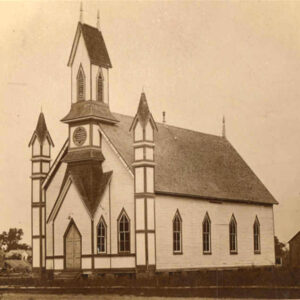 McCrory Church
McCrory Church 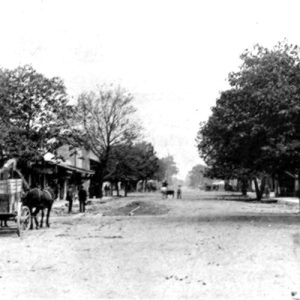 McCrory Street Scene
McCrory Street Scene 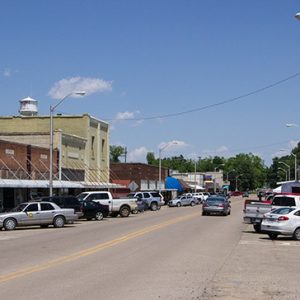 McCrory Street Scene
McCrory Street Scene 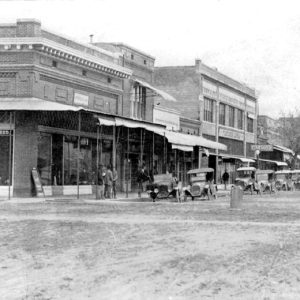 McCrory Street Scene
McCrory Street Scene  McCrory Street Scene
McCrory Street Scene 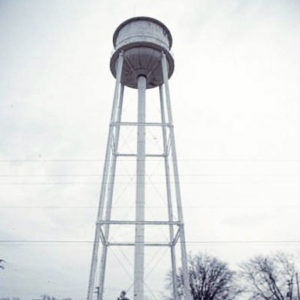 McCrory Water Tower
McCrory Water Tower  Woodruff County Map
Woodruff County Map 




Comments
No comments on this entry yet.